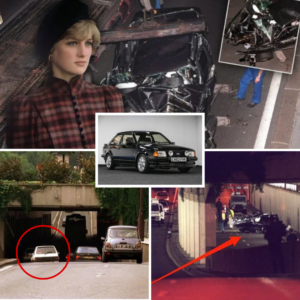
Elon Musk’s Cybertruck is inspiring a lot of strong feelings.
If a car can embody the age that created it, the Tesla Cybertruck is, fittingly, a culture war on wheels.
When Elon Musk, the chief executive of Tesla, unveiled it at a presentation in Los Angeles five years ago, he seemed to know this hulking wedge of stainless steel would be polarizing.
“It’s not going to be for everyone,” he said at the time.
Since the electric behemoth started rolling off the Tesla factory floor last November, its hard-edged geometric form has indeed proved to be a love-it-or-hate-it proposition. And more than any other Tesla, the Cybertruck seems to represent Mr. Musk himself — an extremely online attention seeker loved by some and loathed by others.
Lately it has become a sport among the vehicle’s detractors to spot Cybertruck owners parking improperly and driving aggressively — and to generalize about the type of people who would identify themselves with such a conspicuous machine.
A microgenre of online videos has also sprung up, showing Cybertrucks immobilized by sand, water and snow. The posts are often accompanied by commentary laden with Schadenfreude.
In May, a news site in Nantucket, Mass., got in on the act, shaming a Cybertruck driver for encroaching on a crosswalk on the affluent island and getting stuck while doing some off-roading on a beach.
The scrutiny has left some Cybertruck owners feeling a little embattled. “At first, I didn’t care — but now it’s starting to get annoying,” one driver wrote in a Cybertruck drivers’ forum in a thread titled “Cybertruck brings the haters.”
Richard Zhang, a Cybertruck owner from Pittsburgh, said the vast majority of the interactions he has about his truck have been positive. But the negative ones are really, really negative.
“They are so filled with rage that they have lost all sense of human decency and respect,” Mr. Zhang, 30, said of the critics he has encountered.
Drew Magary, a writer for the San Francisco news site SFGate, recently took a Cybertruck out for a spin and hammered home some stereotypes about the vehicle’s fans in a satirical column.
“I fit the customer profile for one to a T,” Mr. Magary wrote. “I am tall. I am white. I am loud. I don’t really have many friends where I live. Most important, I desperately want people to think I’m cool.”
Consumers have long expressed their personalities and lifestyles through their cars — think of the midlife crisis Corvette. But for many years there has not been an automobile — or any consumer product, really — that has provoked such strong reactions, that has carried so much loaded cultural meaning.
It all starts with Mr. Musk.
Image
The years of the Cybertruck’s development roughly tracked the public transformation of the SpaceX boss. Once a Silicon Valley darling celebrated for his commitments to clean energy and space exploration, Mr. Musk has become the combative owner of X, formerly Twitter, and an enthusiastic supporter of former President Donald J. Trump.
Some see Mr. Musk as a swaggering champion of free speech and a technological pioneer who has turned some innovative notions into riches; others see him as a self-interested, conspiracy-mongering multibillionaire.
Mr. Musk’s public image hasn’t entirely eclipsed the Tesla brand. David Tracy, the editor in chief of the car culture website The Autopian, said the company’s other offerings still exist apart — to a certain extent — from the man himself.
“They’re logical,” Mr. Tracy, an automotive engineer, said of the rest of the Tesla lineup, sleek, electric sedans that largely blend in with other vehicles on the road. “They are aerodynamic, they are efficient, they make sense from a usability standpoint. You can convince yourself anybody would have developed this car.”
Still, Mr. Musk’s politics may be repelling some potential Tesla buyers, contributing to a recent slump in sales. Perhaps that makes the drivers of Cybertrucks stick out even more. And in a culture obsessed with the political implications of consumer decisions, it’s probably inevitable that owning a Cybertruck reads as an endorsement of Mr. Musk and his ideas.
“The Cybertruck is very hard to separate from Elon Musk, because it’s not really logical,” Mr. Tracy said.
Not really logical: The Cybertruck doesn’t resemble any other cars on the market, where design tends to be iterative. And achieving its singular look required significant trade-offs in build quality, visibility and maneuverability, Mr. Tracy argued in his review. (In April, Tesla announced it would recall nearly 4,000 Cybertrucks to fix an accelerator that can get stuck.)
Mr. Tracy’s guardedly positive assessment drew such a volume of angry comments from Cybertruck haters that he quickly wrote a follow-up headlined “Reviewing The Tesla Cybertruck Is Totally Pointless.”
The visual references for the Cybertruck don’t come from contemporary car design. Instead, according to an internal Tesla mood board shared by Walter Isaacson, Mr. Musk’s biographer, the Cybertruck was inspired by the dystopian science fiction of the 1980s and 1990 — movies, anime and role-playing games that are holy texts of the geek imagination.




In these dark worlds, where corporations reign over a teeming and violent urban underclass, cars often function as armored weapons. (The Tesla mood board also featured images of tanks and fighter jets.) Mr. Musk has long boasted of the Cybertruck’s bulletproof exterior; and on the day of its unveiling, Franz von Holzhausen, Tesla’s chief designer, hit the door with a sledgehammer, leaving no dent. (A small metal ball thrown by Mr. von Holzhausen, however, did crack a window.)
For members of an elite tech set preoccupied with problems of urban life in the Bay Area and elsewhere, it’s hard not to see the Cybertruck as a dream car — or a car in which they can navigate their nightmares.
Indeed, the vehicle’s fortresslike appearance and hefty price tag (it starts at around $80,000) seem to tap into contemporary anxieties around social disorder, according to Michael Rock, the founding partner of the brand consultancy 2×4.
“It’s the embodiment of the culture of fear right now,” Mr. Rock said. “Why do you need a bulletproof car in the Hamptons? There’s a mentality to it. You’ve built this huge thing around you, and it’s all about this invading horde out there, and you’re in this bulletproof container.”
Mr. Rock compared the Cybertruck to the Hummer H2, another imposing automobile whose success critics linked to a frightened national mood. A New York Times review of the Hummer published in 2003, shortly after the United States invaded Iraq, called it “a unilateral personal statement in sync with a unilateral foreign policy.”
As Mr. Musk well knows, provoking a strong public reaction can be a savvy marketing strategy. And here, the Cybertruck is driving the same expressway as other eccentric cars before it. In 2000, Chrysler released the PT Cruiser, a retro hatchback wagon that called back to the gangster mobiles of the 1930s. It regularly tops lists of the ugliest cars ever made, but it was a hit with consumers.
“We had people who hated it and loved it,” said Clotaire Rapaille, an anthropologist and marketing consultant whose research for Chrysler on consumer psychology influenced the design of the PT Cruiser. “And that was enough to create a market. You don’t need everyone to love you. You just need enough people to love you to make it a big success.”
Dr. Rapaille said he admired the Cybertruck for attempting to stand out in a world of generic cars, but that he found its appearance alienating.
“This is a weapon,” he said. “Metal, angles, sharp: It’s like a blade. And so it’s definitely macho. It’s not round, there are no curves. I wonder if I’ll ever see a nice lady driving this kind of car.”
Image

A robust online community discusses modifications to the Cybertruck, including painting it different colors and wrapping it in custom designs.Credit…David Zalubowski/Associated Press
Women, however, own Cybertrucks, too. In an email, Dr. Helen Raynham, a dermatologist in Massachusetts, said that she had reserved her Cybertruck more than four years ago and had put a custom license plate on her new vehicle: “GRLBOS.” She added that she surrounded the plate with diamonds.
Talk to owners like Dr. Raynham, and they will report that, despite a smattering of middle fingers and passing guffaws, most people who stop to gawk at their trucks are friendly and supportive.
In particular, owners say, the Cybertruck elicits delight from children. Jonathan Widjaja, a 30-year-old lawyer in Santa Monica, Calif., parked his car in Venice over the Fourth of July weekend and watched reactions to it in Sentry mode, a feature that allows owners to remotely monitor their Cybertrucks.
“Kids were hugging it and kissing it,” he said. “The car is definitely a celebrity.”
To the legions of passers-by who owners say want to touch their Cybertrucks, sit on their Cybertrucks, and take selfies with their Cybertrucks, the vehicle isn’t a political or cultural flashpoint. Instead it’s something rarer: A genuinely novel piece of mass design.
In some circles, the vehicle’s unique appearance has made it into a coveted status symbol and an object of considerable fascination. Celebrities like Kim Kardashian and Serena Williams have both been spotted in Cybertrucks. On YouTube, there is a robust, seemingly nonpartisan culture around modifying Cybertrucks and testing out their unusual features.
Indeed, so much attention has been paid to the right-wing tech connotations of the Cybertruck that it’s easy to forget that the thing is still a 6,000-pound electric vehicle — a kind of car once associated with coastal liberals.
Dwayne Sinclair, a 58-year-old systems engineer and Cybertruck owner from Redondo Beach, Calif., as well as a self-described leftist who dislikes Mr. Musk’s politics, said that none of the negative reactions he had gotten about his new truck had come from people he imagines are liberals.
Instead, he said, he has gotten flipped off a few times by men driving past in lifted diesel trucks — like the Ford F-150, which has long been the most popular vehicle in the United States.
Recently, Mr. Sinclair was at a Tesla charging station, when he heard the rumble of an engine.
“A guy in his big, super-heavy diesel truck drove up and as he was driving past he started laughing,” Mr. Sinclair said. “It was weird. You’ll get someone just break out, uncontrollably laughing.”




